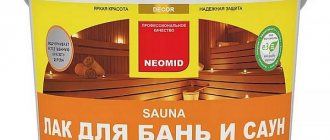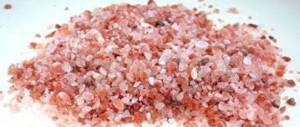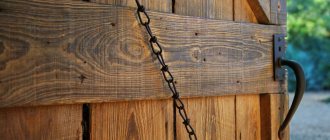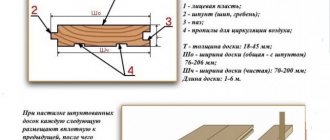The bathhouse is traditionally a place where you can rest, relax and improve your body's health. The main properties of the bath are acceleration of blood flow and activation of stagnation processes in the body. Each session spent in the steam room helps to get rid of accumulated waste and toxins, rejuvenate the skin and get rid of the feeling of fatigue. It is important to know that the effectiveness of these procedures directly depends on the correct arrangement of the bathhouse building.
The walls of the bathhouse, as well as its ceiling, must be insulated. This is especially true for the ceiling, since the ceiling is a high temperature zone. Heated air is always lighter than cool air, and because of this it rises, where it can go to the attic room and then move outside. Thus, thermal energy and heat heat the area around the bathhouse more, which is wasteful. An uninsulated bathhouse ceiling is a place for condensation to form. Its appearance signals that the process of insulating the bathhouse ceiling with expanded clay should begin as soon as possible. It is better to provide thermal insulation at the stage of building the bathhouse, then there will be no need for partial dismantling of the structure.
Types of expanded clay
Expanded clay is represented by round granules with a porous structure made of baked clay.
There are three variations of it:
- Expanded clay sand
. Available in grain sizes from 0.1 to 10 mm. It is used as a filler in mortars and as a backfill when insulating bathhouse ceilings up to 50 mm thick. Price - from 150 rubles per bag. - Expanded clay gravel
. Each granule has a size of 1 to 2 cm. It is used to insulate the entire structure. The cost is about 200 rubles per bag. - Expanded clay-crushed stone
. The fractions have a size of 2-4 cm. They are often mixed with gravel to compact the mixture. Price - about 200 rubles per bag.
A 15-centimeter layer of such material can reduce heat loss by more than 70%.
Features of the material
Expanded clay has been used as an insulating filler for decades. For its production, heaving clay with a high volume of air pores is taken. Its weight is slightly less than standard, and its color has a light brownish palette. The clay is processed in high-pressure kilns, resulting in a variety of granules.
Expanded clay particles are so hard and durable that it is almost impossible to break them. Moreover, they are several times lighter than the same volume of pebbles. Each part contains dense dried clay with many holes, which provide the lion's share of the heat-retaining properties of the material.
Expanded clay does not burn, so it can be used to insulate floors, walls and even attics. Moreover, in the latter case it is even more appropriate compared to, for example, expanded polystyrene, which, as is known, is flammable.
Expanded clay is a free-flowing material, so it is easier to finish horizontal surfaces with it. When insulating the floor, it is enough to simply scatter and level it.
Features of bathhouse thermal insulation with expanded clay
Expanded clay is a natural material, which means it is environmentally friendly. However, environmental friendliness is not the only advantage of this heat insulator. It is very popular when insulating a bath due to its many advantages, such as:
- Cheap
. Compared to most synthetic insulation materials, expanded clay has a low cost. - Durability
. The material does not emit toxic fumes and does not decompose or rot. - High thermal insulation properties
. The thermal conductivity of expanded clay is 0.12 W/mK, which is especially important when used in a bathhouse, where high temperatures are considered the norm. - Fire resistance
. Expanded clay is a heat-resistant material. It does not burn or melt under high temperatures. - Light weight
. This allows it to be used to insulate the ceiling of a bathhouse. - Pest resistance
. Expanded clay is not attractive to insects and rodents. - Versatility of use
. Using expanded clay you can not only insulate, but also level the surface. In addition, it can be used in conjunction with heated floors.
As for the disadvantages of using the material, among them we can highlight the labor-intensive process of thermal insulation.
In addition, when using expanded clay to insulate a bathhouse, it is necessary to pay special attention to vapor and waterproofing. Before proceeding directly to thermal insulation work, calculate the amount of expanded clay that is required to insulate the bathhouse. It is better to purchase it with a reserve, since fragile granules may break during transportation. It is advisable to take material with granules of different sizes. This will allow it to form the most dense backfill and reduce further subsidence.
Pay special attention to vapor and waterproofing. The best option is Izospan or aluminum foil. But it is not recommended to use roofing felt. It is flammable and can become wet under the influence of high temperature and humidity.
Why do you need to insulate the bathhouse ceiling?
In the bathhouse we not only wash ourselves, we take a steam bath. The body is also hardened here and the entire immune system is mobilized. In combination with infusions of medicinal herbs, bath procedures help defeat diseases and strengthen defenses.
Also read - Do-it-yourself wiring in a bathhouse
It is very important to observe the temperature regime in the bathhouse. The temperature during bathing procedures will depend on how to insulate the roof of the bathhouse from the inside. But it is the high temperature and corresponding air humidity that have such a beneficial effect on the body. In order for the temperature conditions in the bathhouse to be suitable for hardening, it is important not only to build a bathhouse, but also to insulate it.
If there is a heat leak in the bathhouse, it will never be possible to heat it up to the required temperature: a lot of fuel will be spent for this, but the effect will be zero. If the thermal insulation of the bathhouse is poor, the walls and ceiling will be cold. This will create some discomfort during bath procedures. Collecting on a cold ceiling, steam will condense. So in the steam room, instead of a healing one, a pathogenic atmosphere will be created, because there will be pockets of mold on the wall and ceiling. It is unlikely that it will be useful to take a steam bath in such a bath. So, insulating the ceiling in a bathhouse is much more important than insulating the walls (although this cannot be ignored).
What materials are needed to insulate a bath?
In the old days, insulation of the bathhouse ceiling was carried out only with the help of natural materials - moss, tow, sawdust, earth, etc. Nowadays, different types of mineral wool, as well as expanded polystyrene boards, are used for insulation purposes. Natural materials are used less because they do not have a long service life, are subject to rotting, and insects can live in them.
Good insulation for a bathhouse roof must be treated with antiseptic solutions that protect against rotting. In addition, the use of anti-ignition agents is mandatory - fire safety rules require the use of such materials almost everywhere.
Look here - Do-it-yourself bath insulation
Modern materials for ceiling insulation have the following advantages:
- They have an increased service life, unlike traditional ones.
- Do not decompose in conditions of elevated temperatures and high humidity.
- They have a small specific gravity.
- They retain heat very well.
- They have a high degree of sound insulation.
- New insulation materials are also completely safe for the environment.
- Since they are light in weight, they are very easy to install: no special labor is required.
Please note that a poorly insulated roof will not last long: due to the rotting process, the ceiling will deteriorate, and it will become impossible to take water procedures in the bathhouse. Therefore, the fate of all your efforts invested in the construction of the bathhouse depends on how to properly insulate the ceiling of the bathhouse.
Bathhouse insulation technology with expanded clay
The porous structure of the heat insulator granules significantly increases its thermal insulation characteristics. In order for energy saving to be as effective as possible, you need to correctly select not only the main insulation, but also other insulators.
Instructions for insulating a bathhouse ceiling with expanded clay
When calculating the amount of material for thermal insulation of the ceiling in the bathhouse, keep in mind that the layer should be 20 cm or more. Insulation is carried out from the attic side.
If desired, you can mix expanded clay in the form of sand and gravel. This will make the backfill as dense as possible. We carry out the work in the following sequence:
- We overlap the vapor barrier membrane by 12-15 cm. If aluminum foil is used, the reflective surface should be located inside the room.
- Carefully seal the joints with metallized tape. If you decide to use roofing felt, seal the joints with rubber-bitumen mastic.
- We vapor barrier the rafters and chimney above the level of the future backfill. We attach the material using masking tape or a construction stapler.
- Make a layer of crushed clay about 10 cm and compact it thoroughly. This is necessary for additional thermal insulation.
- We fill in the expanded clay and level it over the surface.
- Fill the surface with cement-sand screed.
If you plan to continue using the attic, you can lay a floorboard on top across the beams.
Features of floor insulation in a bathhouse with expanded clay
The thermal insulation of the flooring in the steam room must be taken care of at the stage of its construction or major repairs.
It is also important to take into account the maximum permissible load when calculating the layer thickness. During the process we follow these instructions:
- We spread the waterproofing bitumen material on the concrete covering with an overlap of 10 cm. The overlap on the walls should be about 15 cm.
- Using alabaster, we attach “beacons” around the perimeter of the floor, which will show the thickness and evenness of the layer.
- When filling between wooden joists, care must be taken to pre-treat them with antiseptic compounds.
- We fill in expanded clay with a height of 15-20 cm. In this case, it is also better to use a mixture of fractions of different sizes.
- We water the backfill with “cement laitance” (a mixture of cement, water and primer). This is necessary so that the individual granules “adhere” to each other.
- A day later, we install a metal reinforcing mesh on top to give the structure additional rigidity and strength.
- Fill it with a cement-sand screed about 3 cm thick and wait for it to dry completely. Please note that the drying of the screed can be determined with a glass jar. It must be placed with its neck to the floor. If it does not fog up, then you can begin further work.
- We fix the waterproofing material.
- We install finished floors. The final design strength of such a flooring is achieved only after a month.
If you decide to insulate with expanded clay over the ground in a bathhouse, then its layer will be significantly thicker (about 30-35 cm), which will raise the height of the floor.
This must be taken into account at the stage of designing the height of the walls of the bathhouse. The use of expanded clay in concrete is possible, but not so effective. Therefore, this method is not suitable for thermal insulation of a steam room.
Specifics of insulating bath walls with expanded clay
Bulk materials can only be used for thermal insulation of brick walls of buildings.
This process must be thought through during construction. A brick bathhouse is insulated with expanded clay in the following order:
- We are building the first outer wall using brickwork, half a brick thick.
- Inside, at a distance of 35 cm, we lay out a second wall of the same thickness in parallel.
- We install jumpers inside every 10 cm.
- We fill the expanded clay with a layer of 20-40 cm and compact it thoroughly.
- We pour the cement mixture to “set” the individual fractions.
- We repeat the process to the top of the structure.
This method is used extremely rarely due to the labor intensity of the work and the increased load on the foundation. However, if you decide to insulate the walls of the steam room in this way, then pay special attention to the hydro- and vapor barrier of the walls.
How to insulate a bathhouse with expanded clay - watch the video:
Effective thermal insulation of a bathhouse with expanded clay can be done with your own hands, if you take into account all the nuances of this process. The material is hygroscopic, and therefore the insulation of surfaces must also be carried out reliably. By adhering to general recommendations and instructions, you can easily insulate a steam room with an environmentally friendly and durable heat insulator.
Characteristics
Judging by the reviews, expanded clay as a floor insulation is characterized by several properties:
- Lightness;
- Low thermal conductivity;
- Speed of installation;
- Good tolerance to moisture (if there is a vapor barrier);
- Affordable price;
- Anti-flammability;
- Possibility of laying under screed.
The affordable cost of the material is explained by the speed of its production. The many advantages of expanded clay persuade buyers to choose it for floor insulation.
Unfortunately, the material also has disadvantages:
- Thermal insulation properties are slightly lower than those of polystyrene foam or mineral wool;
- Use for vertical surfaces requires the manufacture of the correct frame;
- Requires compaction;
- Requires a mandatory film vapor barrier when used in a bathhouse.











